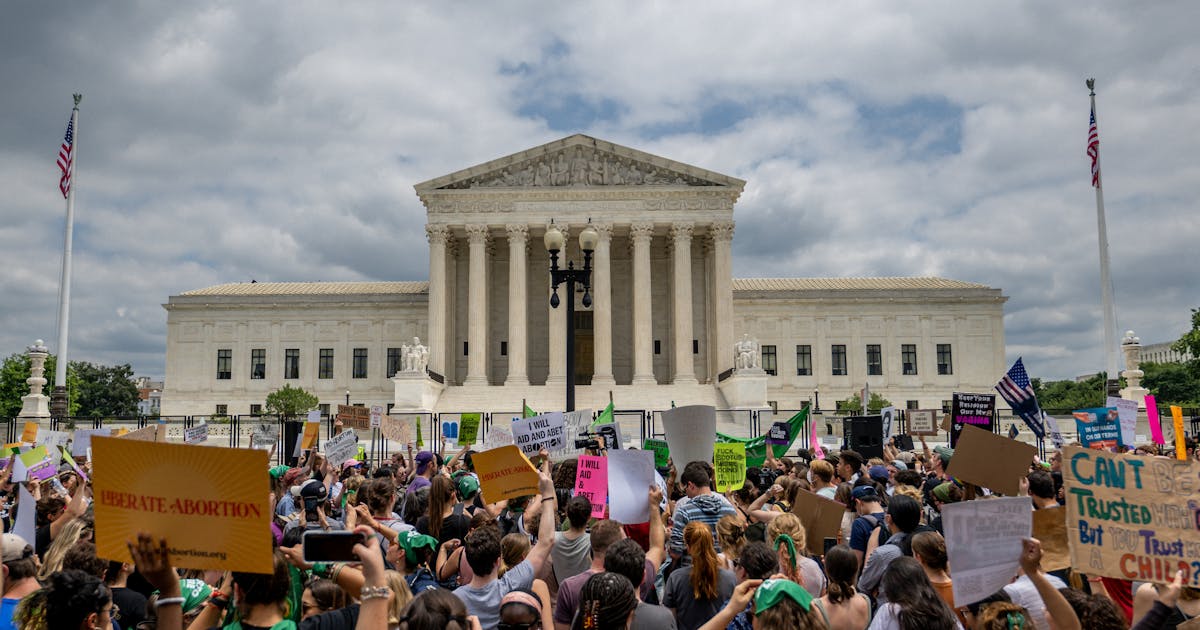Reminder that getting control of the house and senate could make stuff like this potentially get through
This proposal is not only one that expands the number of justices over time but alter things like the court’s shadow docket, require justices to release tax returns, and more



What happens when three justices retire in one term, or the senior justice dies right before being forced out? Do we still force out two more justices? We obviously can’t shrink the court each time, so either we don’t force a justice out when we normally should, or we give the president an extra appointment. Neither seems like a good option.
Why not just rotate the judges out periodically from court below?
What I’ve described could (mostly) be enacted without a constitutional amendment. The basic idea of removing the fixed size and having the president appoint one candidate every two years iswell within Congress’s authority to enact.
Some of the minutiae, such as the line of succession, or circuit court judges temporarily serving on the supreme court might not currently be constitutional.
I’m pretty sure a situation like that could be easily remedied. After all what would happen if three of them dropped dead right now. The president would nominate three new ones. As far as options go it sounds great. My suggestion would work better than any other solution out there and guarantee a slow but steady turn over in the court.
Ok, before I answer that question, I’m going to rewind a few years. It’s 2019 again. Trump is in office. But this time, three justices have just died. I’m ignoring actual SCOTUS deaths and retirements, and just assuming the three hypothetical deaths/retirements, and any statutory appointment required by our systems. I’m doing this because I’m assuming if you are pissed about the state of the court today, you’re probably pissed at the person primarily responsible for it’s current makeup.
Under the status quo system, Trump gets to make three more appointments. There was no statutory appointment prior to this, so he only gets to appoint three justices. Trump has appointed 33% of the court.
Under your system, (as I understand it), the most senior justice in 2017 was forced out and replaced. In 2019, the next most senior justice was forced out and replaced. Now, if your system follows the same rules as the status quo system, Trump gets to make three more appointments to replace the dead justices. 5 of the 9 justices have been appointed by Trump, and the first of them isn’t forced out until 10 years later. Trump has appointed 55.5% of the court.
Under the system I described, Trump appoints two candidates. The size of the court increases from 9 to 11. Trump has appointed 18% of the court. Then, three candidates die. The court falls to 8, but Trump doesn’t get to fill any more seats. Trump’s appointments now account for 25% of the court.
As I have demonstrated above, your solution does not “guarantee” slow turnover. In the scenario discussed, turnover was rapidly accelerated relative to the status quo. The president was able to completely install a brand new majority due to the effects of your forced retirement.
Consider another scenario: the court is 5/4 conservative/liberal in 2016, and two of the liberals are senior. Trump replaces them. The court is now 7/2. Now, the original 5 conservatives also retire. Under existing rules, Trump gets to replace them as well. The court is still 7/2, and the liberals are now senior.
Biden is elected in 2020. He gets to replace the two liberals. The court is still 7/2 conservative, but now the liberals are junior. Harris wins in 2024. She finally gets to replace a Trump appointee, but the court is still 5/4 conservative in 2028. The court doesn’t shift back to liberal until 2030, and then only if Harris wins re-election in 2028.
As you have described it thus far, your system is far worse than what we have now in terms of “guaranteeing slow but steady” change.
My solution actually does achieve such change. The longer the justices stay on the court, the less power any one of them holds, as they continue to hold one vote among a growing cohort. At the same time, however, the president is regularly inserting new voters into that cohort.
You wrote all of that just to prove me right.
If that is what you managed to glean from it, I’m afraid your reading comprehension skills are sorely lacking.